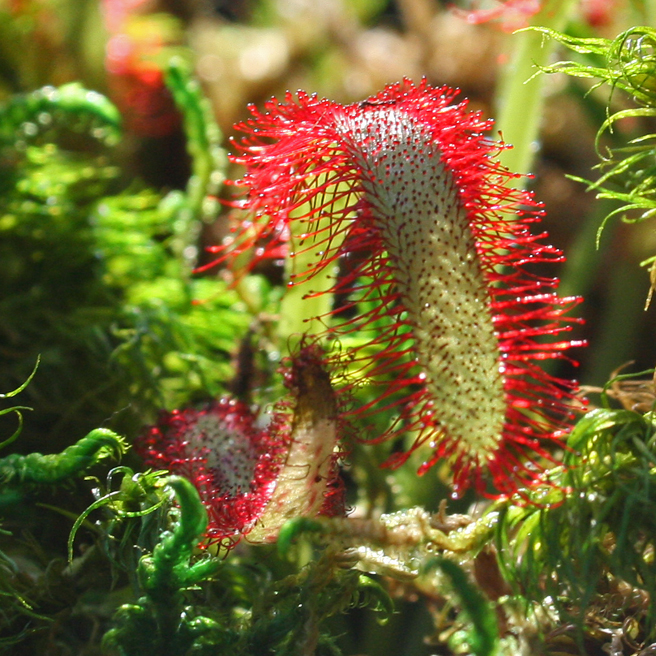You have to look closely to find sundews. They’re low to the ground and look like nothing more than sparkling morning dew as you tower over them. I remember thinking how odd it was to see the gleaming moisture by mid afternoon. When I bent down for a closer look I discovered (though I had no idea what it was) my first sundew (Drosera rotundifolia) in a low lying pasture in Berwick, Nova Scotia. I felt like a botanist exploring some new and miniature world!
These carnivorous plants do not actually glisten with dew but secrete sweet mucilage (I gave it a taste) through the tips of its tentacles. Drawn to the color and sweetness of the sundew, insects become stuck and are further ensnared as other tentacles are stimulated to move toward the prey while the leaf rolls up quickly killing its prey and absorbing its nutrients with digestive enzymes.

English Sundew (Dorsera anglica) catching fly – photo by Noah Elhardt 2006
I was happy to revisit the magic of this plant that dons a dewy cloak as a trap for it’s dinner when I recently picked up this Cape Sundew (Drosera capensis) at the local nursery. You can see why it’s also known as the Octopus Plant with it’s tentacled sticky, undulating “arms”.




